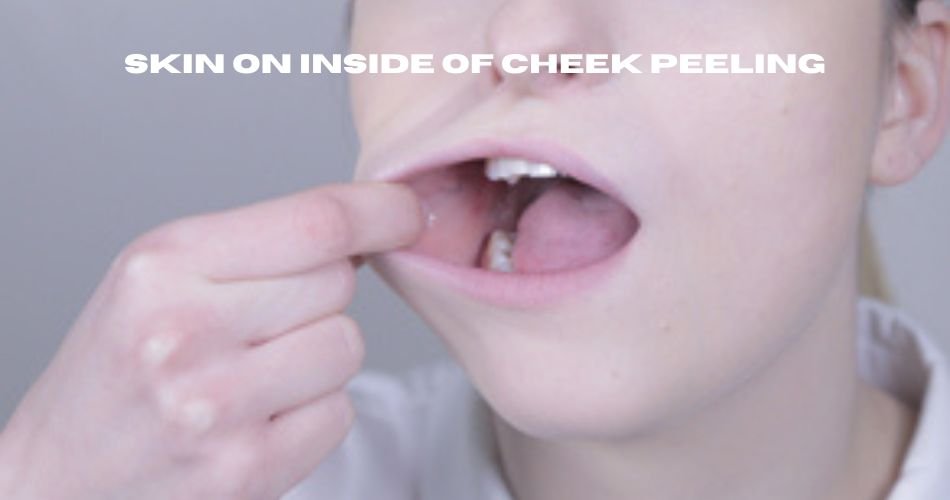Peeling skin on the inside of the cheek is a condition that can be both puzzling and uncomfortable. Often overlooked, this issue might seem minor but can signal a variety of underlying causes ranging from simple irritation to more serious health problems. Many people experience this sensation at some point in their lives, but understanding why it happens and how to address it properly is key to maintaining oral health and comfort. In this article, we’ll explore the intricate reasons behind skin on inside of cheek peeling, common symptoms, and effective treatment strategies, providing you with a thorough guide to keep your mouth healthy and pain-free.
Understanding the Anatomy and Sensitivity of the Inner Cheek
The inside lining of your cheeks, medically referred to as the buccal mucosa, plays a crucial role in protecting your oral cavity. Unlike the skin on your face or hands, this tissue is soft, moist, and particularly delicate, designed to withstand constant exposure to mechanical forces such as chewing and speaking. However, this sensitivity also makes the inner cheek prone to injury, irritation, and peeling. The mucosal lining is rich in blood vessels and nerves, which means any damage can quickly cause pain, inflammation, and visible changes like peeling or redness. Because it’s such a vital part of your oral environment, even small disruptions can affect your overall mouth health, making it essential to understand the causes of peeling in this area.
Common Causes of Peeling Skin on the Inside of the Cheek
There are multiple factors that can cause the skin inside your cheek to peel. Some are harmless and resolve quickly, while others require medical attention.
Mechanical Irritation and Trauma:
One of the most frequent causes is physical irritation from habits like cheek biting, chewing on pens, or accidentally scraping the inside of your mouth with sharp teeth edges. Constant rubbing from dental appliances such as braces, dentures, or retainers can also wear down the mucosal lining, leading to peeling. Even aggressive tooth brushing or flossing with hard bristles can irritate this delicate area.
Chemical and Thermal Burns: Consuming extremely hot foods or beverages can cause thermal burns inside the mouth, damaging the sensitive tissue. Similarly, exposure to harsh chemicals in certain mouthwashes, whitening products, or toothpaste ingredients (especially sodium lauryl sulfate) can irritate and cause the inner cheek skin to peel.
Allergic Reactions: Allergies to foods, dental products, or additives like flavorings and preservatives may lead to inflammation and peeling inside the mouth. Identifying and avoiding allergens is crucial because repeated exposure worsens the condition.
Poor Oral Hygiene and Infections: Neglecting regular brushing and flossing allows bacterial buildup, which may trigger infections such as oral thrush (a fungal infection caused by Candida) or herpes simplex virus. Both infections can cause peeling along with soreness, white patches, and ulcers.
Nutritional Deficiencies: Deficiencies in vitamins, particularly B-complex vitamins (like B12 and folate) and minerals such as iron, often manifest as oral mucosal problems. A compromised immune system or malnutrition can make the mucosal lining thinner and more prone to damage and peeling.
Autoimmune Diseases: Certain autoimmune conditions, including lichen planus, pemphigus vulgaris, or lupus, can cause chronic inflammation of the mucous membranes. These diseases damage the inner cheek lining, resulting in peeling, painful sores, and white patches.
Lifestyle Factors: Tobacco and Alcohol Use: Smoking and heavy alcohol consumption irritate and dry out the mucous membranes, increasing the risk of tissue breakdown, peeling, and even precancerous changes in the mouth.
Recognizing Symptoms Associated with Inner Cheek Peeling
Peeling skin inside the cheek rarely happens in isolation. It is often accompanied by symptoms that can help determine its cause. Common signs include redness, swelling, and tenderness of the affected area. Many people describe a burning sensation or sharp pain when eating spicy or acidic foods. In more severe cases, ulcers or raw patches develop, which may bleed or become infected if left untreated. You might also notice white or yellowish patches overlaying the peeled areas, especially if fungal or viral infections are involved.
When to Be Concerned About Peeling Inside the Cheek
Most cases of cheek peeling are minor and resolve within days, but you should seek professional advice if the peeling persists longer than two weeks, worsens, or is accompanied by systemic symptoms such as fever, swollen lymph nodes, or unexplained weight loss. Non-healing ulcers or lumps inside the cheek should never be ignored, as they may indicate precancerous or cancerous changes that require urgent evaluation.
How Medical Professionals Diagnose Inner Cheek Peeling
Diagnosing the underlying cause involves a detailed oral examination by a dentist or healthcare provider. They will look for signs of trauma, infection, or systemic disease. If needed, a biopsy of the peeling skin or swab cultures can identify infections or abnormal cells. Blood tests may also be performed to check for nutritional deficiencies, immune disorders, or allergies. Proper diagnosis ensures targeted and effective treatment.
Treatment Options for Skin Peeling Inside the Cheek
Treatment depends on the underlying cause but usually begins with simple steps to protect and heal the mucosal tissue.
Home Care and Remedies: Rinsing the mouth gently with warm saltwater several times a day can reduce inflammation and kill bacteria. Avoiding spicy, hot, or acidic foods helps prevent further irritation. Keeping hydrated and practicing gentle oral hygiene also promotes healing.
Over-the-Counter Solutions: Topical gels or ointments containing anesthetics like benzocaine can relieve pain, while antiseptic mouth rinses reduce infection risk. Moisturizing oral sprays or gels can ease dryness and discomfort.
Prescription Medications: If infections are present, antifungal or antiviral medications may be prescribed. Autoimmune conditions often require corticosteroids or immunosuppressants to control inflammation. Your healthcare provider will tailor the treatment based on your diagnosis.
Natural Remedies and Preventive Measures to Protect Your Inner Cheek
Many natural remedies complement medical treatments and help maintain oral mucosa health. Aloe vera gel is a gentle, soothing agent with anti-inflammatory properties that can promote tissue repair. Coconut oil pulling is another popular method to reduce oral bacteria and inflammation. However, these should not replace professional care when needed, Preventing recurrence involves avoiding known irritants such as harsh mouthwashes, allergens, tobacco, and alcohol. Maintaining good oral hygiene, eating a balanced diet rich in vitamins, and drinking plenty of water keeps the mucosa healthy and resilient.
Lifestyle Changes to Prevent Recurring Cheek Peeling
Your daily habits directly affect the health of your inner cheek lining. Quitting smoking and reducing alcohol intake lowers chronic irritation. Adopting a nutrient-rich diet, especially foods high in B vitamins, iron, and antioxidants, strengthens your immune system and mucosal tissue. Regular dental visits help catch and resolve oral issues before they worsen. Stress management techniques can reduce cheek biting or grinding habits, preventing mechanical damage.
Oral Health Tips to Maintain Healthy Inner Cheeks
Gentle brushing with a soft-bristled toothbrush and using fluoride toothpaste without harsh chemicals is essential. Flossing daily removes plaque and food particles that could irritate your cheeks. Consider switching to products designed for sensitive mouths. If you grind your teeth, ask your dentist about a night guard to protect your mouth. Avoid chewing pens or fingernails, and if you catch yourself biting your cheeks when stressed, try relaxation techniques to break the habit.
Special Considerations for Children and Older Adults
Children often experience cheek peeling due to teething, accidental biting, or allergies to new foods or toothpaste. Parents should monitor the situation and consult pediatricians if peeling is persistent or severe, In older adults, peeling may result from denture irritation, side effects of medications that cause dry mouth, or thinning of mucosal tissues due to aging. Proper denture fitting and regular medical checkups can help prevent and manage these issues.
Conclusion
Peeling skin on the inside of your cheek is a common yet often misunderstood problem that ranges from minor irritation to signs of more serious health concerns. By understanding the causes — mechanical trauma, infections, allergies, nutritional deficiencies, or autoimmune diseases — and recognizing accompanying symptoms, you can take timely action to heal and prevent further damage. Simple home care, lifestyle changes, and professional treatment, when needed, are effective ways to restore your oral health and keep your mouth comfortable. If your symptoms persist or worsen, don’t hesitate to seek medical advice to ensure the best care possible.






